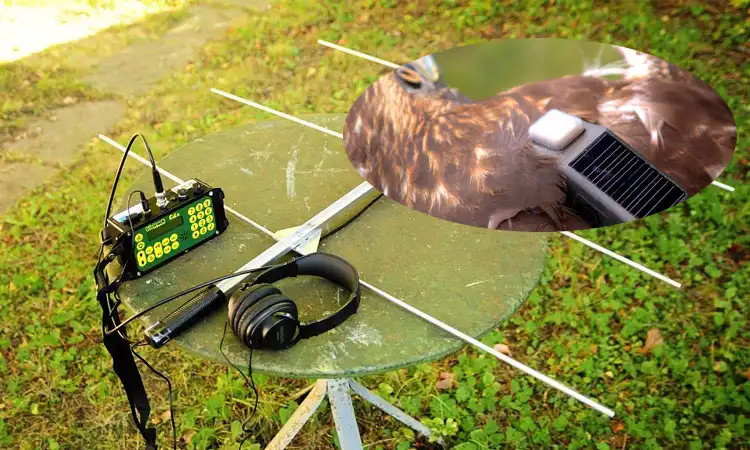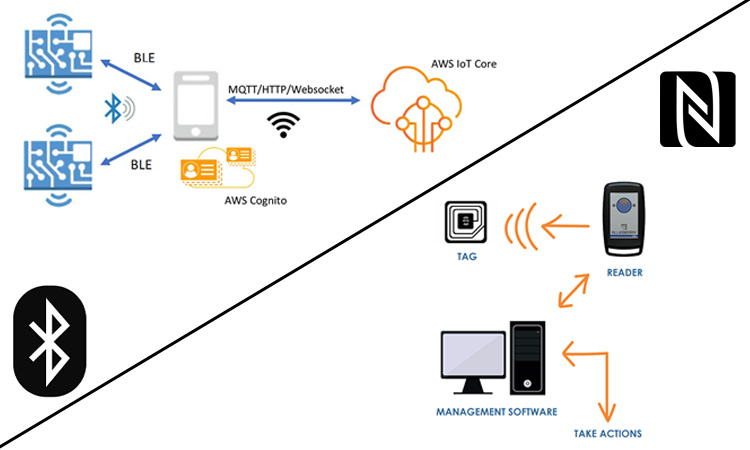Radio telemetry is an important tool for scientists. With modern technology, it’s getting increasingly popular. Researchers have been using this method for over 40 years. They are finding many ways come about every year to improve upon the product in order for animals wearing transmitters to stay out of harm’s way. As researchers continue to learn more about their subjects, they will constantly be able to find ways to make this method even better. They will keep animals safe while they’re out of sight.
What is Radio Telemetry?
Radio telemetry is a method used to track the location of animals. Since the 1960s, scientists have been using this method to locate and track animals in nature. Radio signals are made up of invisible and silent electromagnetic waves, which allow scientists to determine location. Radio telemetry uses radio signals—invisible and silent electromagnetic waves—to determine location. A radio telemetry system comprises three parts: a radio transmitter worn by the animal, a radio antenna, and a radio receiver. The transmitter sends invisible electromagnetic waves that travel through space until they reach the antenna. As they approach the antenna, they change into audible sounds by being transformed into electrical impulses. As the receiver gets closer to the transmitter, the beeps get louder; this means the animal wearing the transmitter is nearby. This audible clue can help researchers locate and follow their subjects.
The different types of radio telemetry techniques include very high frequency (VHF) transmitters, global positioning system (GPS) tracking, and satellite tracking.
wikipedia
Scientists use this technique to track animals like fish, birds, and insects. Animals wear radio transmitters that send radio signals for reception by receivers on land or at sea. Researchers can use this type of tracking for research purposes or conservation efforts regarding endangered species like whales or bats.
The Process of Radio-tagging on Birds
Radio telemetry is the answer if you have ever wondered what it would be like to follow a bird through the woods. This method of tracking animals uses radio tags to record the movements and behaviors of animals in the wild.
Radio telemetry involves attaching a small, battery-powered device to an animal and monitoring its location through a radio transmitter and receiver. These devices can be connected to small animals such as birds or insects, but they are also sometimes used on larger animals such as rabbits and deer.
To use this method of tracking, scientists must first capture the birds. The process of bird banding is used to capture smaller birds that are hard to see. They capture the birds using tall mist nets, long nets made of fine threads that blend into the surroundings.
Scientists place aluminum bands and a unique combination of colored plastic bands around a bird’s legs when they are caught. This process allows scientists to identify a bird once it has been released. Then, scientists strap a radio tag onto the bird’s lower back and use a harness to loop around its legs.
After the radio tag is attached to a bird, scientists can determine its location without seeing it. This is possible because when a transmitter sends out a signal, it sends out many signals and then listens for them. The scientists locate the bird by following the loudest beeps until they locate it.
Scientists can determine the location of a tagged bird without ever having to see it by simply monitoring its radio signal. The scientists use two methods to locate a tagged animal: homing and triangulation. Homing requires the scientist to follow the signal until they locate the animal, while triangulation requires more than one researcher and some geometry. Each researcher uses separate receivers from different locations to determine the direction of the signal. The scientists draw lines showing the direction of their signals on a map so they can find each other without moving from their original locations.
Using Radio Telemetry Pros and Cons
Radio telemetry is a powerful tool for studying wildlife. It allows scientists to track animals in real time from a distance. This can be used to study the behavior of animals in their natural habitats or to help protect them from threats like human encroachment.
Radio transmitters are relatively inexpensive and easy to use. It comes in different sizes and weights, depending on how far they travel and how much power they need. The part of a radio tag that weighs the most is its battery—the larger and heavier batteries are, the longer their battery life will be, the stronger their signal will be, and the farther their signal will travel.
But there are limitations with this type of technology: A transmitter should not weigh more than 5 percent of an animal’s body weight. Or else it could interfere with an animal’s ability to move properly. Because of these limitations, researchers must consider both size and weight when designing studies that involve wildlife radio telemetry. There are transmitters small enough to be worn by birds as light as 6.6 grams—just about half an ounce! These tiny devices have batteries with limited lifespans (lasting only weeks or months) and can only send signals about 0.6 miles (1 km) away from their base station.
Radio tagging has proven to be an effective tool for observing bird migration. However, wildlife radio telemetry as a method for tracking birds has limitations. It allows them to follow the movements of migratory birds during their breeding season. Because they are territorial and stay in one area while nesting and raising their young. But once the birds leave the breeding area to migrate, they quickly move beyond the transmitter range, and scientists can no longer detect where they are.
A major limitation of radio telemetry is that it requires a lot of power to send a radio signal, even short distances. This restricts its use to studying animals over short periods. Because most tags only last from a few weeks to a few months, scientists can only use this method to study the movement of birds for a short time.
As you can see, radio telemetry is an amazing technology. Radio telemetry science creates a spatial database of the locations of animals. Not only does it provide detailed data about the locations of these animals at any given time. But it also allows scientists to use this information to manipulate these animals’ behaviors and maximize their potential in nature. Scientists utilize radio telemetry with wild and domesticated mammals, like horses and dogs. Using this method, they can determine where exactly they are supposed to be while on an expedition in nature. It also helps them track their behavior to ensure that the animals are not overworked or endangered by their activities.
Read More: Telemetry Unit in a Hospital
About Radio Telemetry Problem
-
What is radio telemetry, and how does it work?
Radio telemetry is a wireless communication method that sends and receives data using radio waves. In wildlife research, radio telemetry involves attaching a small radio transmitter to an animal and using a receiver to pick up the signals emitted by the transmitter. Then, the receiver can track the animal’s movements and behavior.
-
What are the advantages of using radio telemetry over other types of communication in wildlife research?
Radio telemetry allows researchers to track the movements of animals in real-time and in remote locations, which can be difficult or impossible with other methods. It also allows for collecting large amounts of data over long periods, which can provide valuable insights into animal behavior and ecology.
-
How can radio telemetry be used to track the movements of animals in the wild?
Radio telemetry involves attaching a small radio transmitter to an animal and using a receiver to pick up the signals emitted by the transmitter. The receiver can then track the animal’s movements and behavior in real-time or download data from the transmitter later.
-
How can radio telemetry data be analyzed to understand animal behavior and ecology better?
Radio telemetry data can be analyzed using various statistical and modeling techniques to understand animal behavior and ecology better. For example, researchers can use the data to estimate home range size, movement patterns, and habitat use, among other things.
-
What are some of the limitations of radio telemetry, and how can they be addressed?
Radio telemetry’s limitations include limited range, potential interference from other radio signals, and the need for specialized equipment and expertise. These limitations can be addressed through the development of more advanced transmitter and receiver systems and improvements in data analysis and modeling techniques.
-
How can radio telemetry be used to inform conservation and management strategies for endangered species?
Radio telemetry can provide valuable information on the movements and behavior of endangered species, which can help inform conservation and management strategies. For example, radio telemetry data can be used to identify critical habitats, track the success of reintroduction programs, and monitor the impacts of human activities on wildlife populations.
-
How can radio telemetry be used to study the impacts of climate change on wildlife populations?
Radio telemetry can be used to study the impacts of climate change on wildlife populations by tracking changes in animal behavior and movement patterns over time. For example, changes in temperature or precipitation may cause animals to shift their ranges or alter their behavior in response to changing environmental conditions, which can be detected through radio telemetry data.









